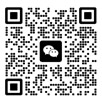摘要:本节课是一节校级赛讲课,一节人教版选修七U4重点词汇应用课的教学案例。首先课前一句激励语言来鼓舞学生士气,然后从教学的指导思想出发,有课堂设计理念、教师备课项目、教学流程(包括师生互动的教学活动、教学方式或方法、教师点评和点拨)、教学反思。本节课由重点词汇的用法,到句子的应用,最后形成段落和一篇作文,可以说是一节词汇课的创新上法,希望本节课能对同仁有所启发。
To my dear Ss:
Today’s hard work brings up tomorrow’s success.今朝勤学努力,明日榜上有名。
【设计意图】课前激励语来激发学生学习的斗志。
选修七U4 Sharing
The usage of the key vocabulary(重点词汇的应用)
教学指导思想:根据《高中英语教学大纲》的要求,在课堂教学中树立以“学生为主体,教师为主导”的新观念。为此我的课型设置是任务型教学,每一部分都设有一定的任务,采用一种全新的“自主预习、合作交流、积极展示、教师点拨、完善学案”新课改课堂教学模式。
课堂设计思想:本节课是在学生会读U4词汇和掌握基本词汇的基础上,着重掌握6个常用的重点词汇,在此基础上让学生讨论,然后尝试着写句子、段落或文章,从而使学生达到学以致用的目的。
Ⅰ.Teaching aims(教学目标)
1. Knowledge aims(知识目标)
·Enable Ss to read & use the usage of the key vocabulary correctly in U4
·Help Ss tolearn the usage of the key vocabulary in U4 for practice
2. Ability aims(能力目标)
·Learn the usage of the key vocabulary in U4 for practice
·Develop the Ss’ ability of learning English in speaking, reading, writing
3. Emotion aim(情感目标)
·Arouse Ss’great interest in learning the new words.
·Develop the Ss’self-exploring and spirit of teamwork.
Ⅱ.Teaching important and difficult points(教学重难点)
1.Teaching important points(教学重点)
·The usage of the key vocabulary: hear from, be dying to, relevant, adjust, participate, arrangement
2. Teaching difficult points(教学难点)
·How to use the key vocabulary correctly in practice
Ⅲ.Teaching methods(教学方法)
Self-study,Task-based teaching,Discussion & Cooperative learning
IV.Teaching aids:The multimedia, study paper, textbook,teaching stick
Ⅴ.Teaching procedure(教学过程)
教学流程:lead-inThe usage of the key vocabularyDiscussionlearning for practice
1.Lead-in
Before new lesson, I would like to show two pictures to help Ss deeply understand Sharing.
1).Give roses to others and the lasting fragrancewill remain in your hand.(予人玫瑰,手留余香)
2).Who often do these kind things?(volunteers)
3)Show the sign of Chinese Youth volunteers.(解释其标志的含义)
【设计意图】为了使课堂生动,学词汇前我首先让学生了解名句、志愿者及其标志的含义,目的是帮助学生理解本单元话题(Sharing)的含义,也能激发学生向善的情愫。
2.The usage of the key vocabulary
方法:自主预习(参考资料书或学案等)+分组合作交流(分别给一组一题)
预备:已让学生提前预习,并让各小组讨论了,本部分直接让各组学生展示。
注明:下划线为让学生完善的部分。
1).hear from sb.=receive a letter from sb.收到某人的来信
【完成句子】:上周我收到你的来信。I _heard from_youlast week.
【点拨】此题简单,直接让第一组一名学生口答,只强调要用过去时态。
2).be dying to do=be dying for (doing) sth.渴望做某事
【同义短语】:“渴望做某事”的表达(至少写5个)
be eager to do/ be eager for; long to do sth/ long for; be anxious to do/ be anxious for…
【思路】课前让学生板书,课上让第二组里出一学生拿教棍给其他学生讲解,然后其他小组补充,教师再总结。
思考:为什么要记忆这些同义短语?
【教学活动】先让学生答,有些学生说:“写作文的时候,为了避免重复。”
【教师点评】对。写作文时,如果你能变换使用词汇的话,那么会给阅卷老师的一个好印象是你的词汇量多,那么你的作文分肯定就高了。另外,常言道“只知其一不知其二”,我把它改为“既知其一又知其二”,如果你做题时做到此,那么做起题来就会得心应手。
3).relevant adj.有关的,切题的 n. relevance
【同义短语】:与……有关(至少写4个)
be relevant to=be related to= be connected with=have sth. to do with…
【句型转换】这次会议与正在进行的事情有密切关系。
What you say is related to the matter in hand.
What you sayis relevant tothe matter in hand.
What you sayis connected withthe matter in hand.
What you sayhas something to do withthe matter in hand.
【教学活动】让第三组的学生提前把“与……有关”有关的短语板书。上课让一学生到黑板前讲解,师生一起评判。
4).adjust vi. & vt.调整、调节、适应 n. adjustment
【重点用法】
adjust A to B调整A以适应B
adjust(sth./oneself)to sth.=adapt(sth./oneself) to sth使……适应……
make an adjustment做出调整
【题组训练】
①.我通常早上上班前校准我的表。
I usuallyadjustmy watch before I go towork in the morning.
②.他使自己很快适应了这个国家炎热的气候。
Headjustedhimselfvery quicklytothe heatofthe country.
③.我已经对设计做了几处调整。
I’vemade a few adjustmentsto the design.
【教学活动】让第五组学生对照【重点用法】来解决【题组训练】。强调adjust表示“校准”时,不能用adapt来替换;“made a few adjustments”是对上面make an adjustment的变形。
5).participate vi.参加、加入(常与介词in搭配) n. participant参与者,共享者
【即境活用】
Students in our school are encouraged toCmore activities after class in order to broaden their knowledge.
A. attend B. join C. participate in D. take part
【教学活动】让学生对照资料书51页,自己查阅participatein,take part in,attend,join表示“参加,加入”区别,然后再思考选择。课上直接让第五组一学生进行讲解(先说选哪一个,再说为什么选这个,最后分析一下其它各选项。)最后教师点评,并强调participate in/take part in/ join in都可以表达”参加某项活动”,只是participate in一般更正式一点。
6).arrangement n.安排;排列.V.arrange v.安排,排列,协商
【重点用法】
make arrangement for为……做好准备;为……做好安排
 《中国水运(下半月)》
《中国水运(下半月)》 《南阳理工学院学报》
《南阳理工学院学报》 《中华脑科疾病与康复》
《中华脑科疾病与康复》 《实用口腔医学》
《实用口腔医学》 《天津市社会主义学院学报》
《天津市社会主义学院学报》 编辑QQ
编辑QQ  编辑联络
编辑联络 

